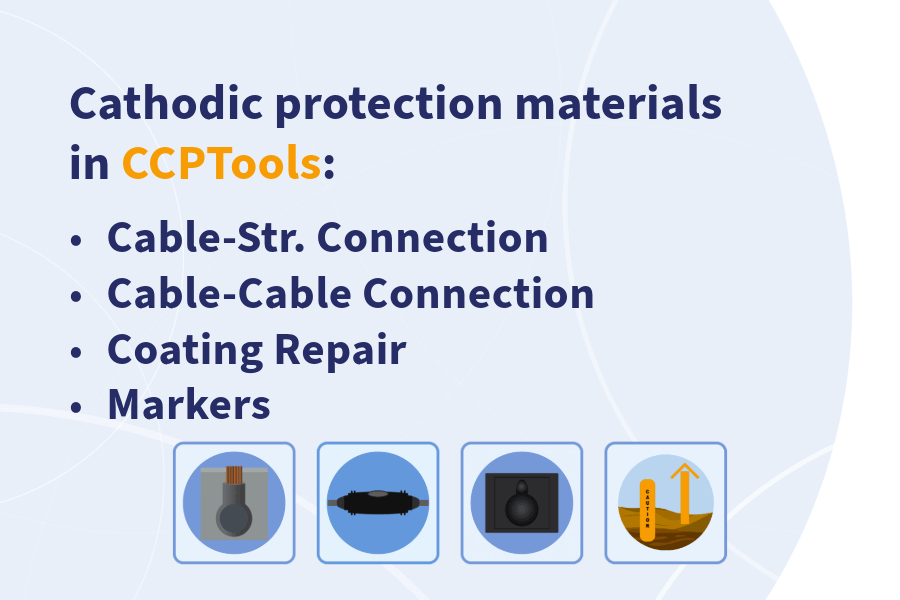
The main components of the cathodic protection system, such as anodes, TRs, and cable, are present in CCPTools in separate sections. The remaining miscellaneous cathodic protection materials cover cable-to-cable, cable-to-pipe or cable-to-structure connections and markers.
- Cable-to-Structure Connection. Though it is older technology, the thermite welding technique is still used and reliable. The thermite welding system comes from the earthing (or grounding) industry. However, the new-generation method, called pin brazing, comes from the stud welding concept. The new and more expensive technology has some technical and safety advantages.
- Cable-to-Cable Connection. The routine electrical practice uses a splicing kit for cable-to-cable connections in cathodic protection systems. In fact, the splicing kit consists of a plastic body and isolating filler. The plastic body works as an enclosure for the cable-to-cable terminal connection. Once in place, the plastic box is filled, usually with two-component resin. Different areas around the world use different isolating materials instead of the resin.
- Coating Repair. Isolating materials cover the cable-to-pipe or cable-to-structure connection points. This isolating material is similar to the other isolating materials of the pipe or structure. The typical solution is certain CAP types with an indented shape at the center to better cover the cable connection point. In addition, a special resin may attach this component to the structure or pipe surface.
- Markers. A marker is a simple indicator to show the location of the groundbed or cable of a cathodic protection system. Its shape, color, material, and usage depend on the project’s electrical specification.
In CCPTools, there is a specific section for miscellaneous cathodic protection materials. Over time, we will complete the information with datasheets from valuable producers.